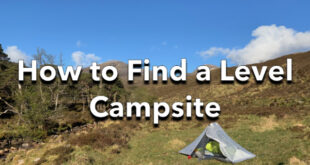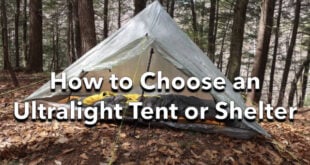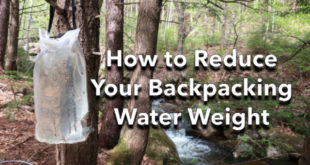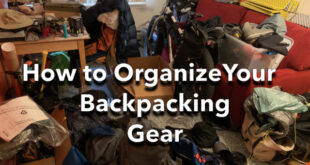If you camp in a tent, it’s much easier to get a good night’s rest on a level campsite than one that’s on a slope. There’s nothing worse than sliding off your sleeping pad all night long because you picked a crappy …
Read More »Frequently Asked Questions
Hiking After Knee Replacement Surgery
How does knee replacement surgery affect your ability to hike? How painful is the recovery? When can you resume hiking after surgery? What advice would you give to hikers with arthritis of the knee? As a frequent hiker, I’ll share my first-hand …
Read More »Road Walk Tips for Hikers and Backpackers
Road walking is often an unavoidable part of long-distance hikes, section hikes, weekend backpacking trips, and even day hikes. Maybe the trail you’re hiking is still under development and you need to hike a stretch of roads, maybe a bridge has been …
Read More »How to Fix Trekking Poles that Won’t Stay Locked
I’ve always had problems with trekking poles that have an internal locking mechanism because I could never figure out how to fix them when they started to slip. It got so bad, that I gave up on them for many years and …
Read More »Should You Carry Sleeping Clothes For Backpacking?
Should you carry a separate pair of sleeping clothes on backpacking trips? Is it worth the added weight? What about when it’s really hot or humid at night and you’re having trouble staying cool? I carry a separate set of clothes …
Read More »How to Choose an Ultralight Tent or Shelter
A lot of SectionHiker readers contact me asking for advice about which ultralight tent or shelter they should buy. These purchases are almost always driven by weight reduction desires, but often in the absence of any considerations about the environmental conditions they …
Read More »How to Reduce Your Backpacking Water Weight
Water is heavy and at 2.2 lbs per liter, it’s probably the heaviest thing you carry in your backpack. Despite this, many hikers and backpackers still carry much more water than they need when hiking or backpacking. That’s wasted effort if you …
Read More »How to Organize Your Backpacking Gear: Tips and Tricks
If you own a lot of hiking and backpacking gear, it pays to keep it well-maintained and organized so you can find what you need when packing up for a hike or a trip. Here are some tips and tricks that I …
Read More »How Do Sleeping Pad R-Values Affect Sleeping Bag Temperature Ratings?
When people complain to me that their sleeping bag isn’t warm enough, the first thing I ask them is to tell me the R-value of their sleeping pad. Because, if it’s under R=5.38 and your sleeping bag has an EN/ISO-certified temperature rating, …
Read More »What is an Inverted Canister Stove?
An inverted canister stove is a canister stove that can burn canister gas (an isobutane/propane mix) in lower temperatures than a regular canister stove. It’s good for winter camping when the nighttime temperature drops below 15 degrees (F). That’s the temperature at …
Read More »10 Biggest Beginner GPS Mistakes
A GPS receiver or Smartphone GPS App is a powerful hiking and backpacking navigation device, but it must be configured properly for use and has important limitations that trip up most beginner GPS users who may put undue trust in its ability …
Read More »How to Become a Better Backpacker
Backpacking requires a high degree of self-reliance and mental agility since nothing ever goes quite the way you expect it to on a backpacking trip! That said, there are a set of fundamental skills that you can learn and master that will …
Read More »Is it Warmer to Sleep Naked in a Sleeping Bag?
No. It’s a myth that sleeping naked in a sleeping bag is warmer than wearing long underwear. I’m not sure how this Internet meme started but it’s dead wrong. How Sleeping Bags Work Sleeping bags are designed to trap the heat your …
Read More »How to Pop Hiking Blisters and Treat Hot Spots
Hotspots and hiking blisters occur when increased friction from your footwear causes the outer layers of your skin to separate from the inner layers, a process called “shear.” When the layers of skin separate, the resulting void is filled with fluid creating …
Read More » SectionHiker.com Backpacking Gear Reviews and FAQs
SectionHiker.com Backpacking Gear Reviews and FAQs 












